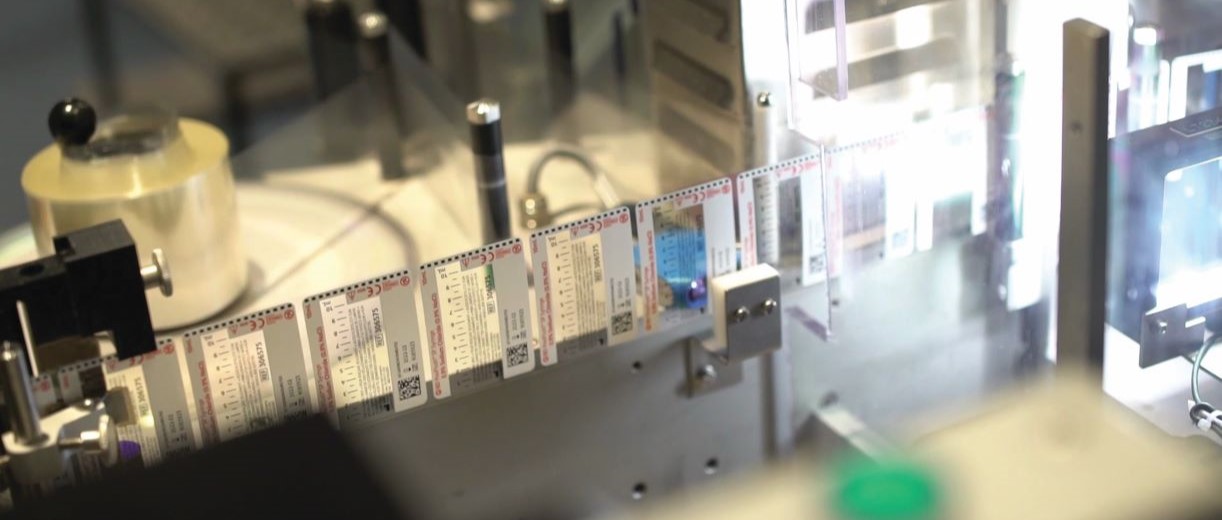Quality control of prefilled flush syringes: key considerations
Before delving into the quality control of prefilled flush syringes, which are an integral part of vascular access management (VAM), let’s focus on patient safety.
Prefilled flush syringes can help reduce the rate of peripheral intravenous catheter (PIVC) failure, while extending catheter dwell times.1 When compared with manually filled flush syringes, prefilled flush syringes showed a significant reduction in flush time according to a study by Keogh et al.2
They may also reduce the risk of contamination by minimising handling.2 Prelabelling of the syringes by the manufacturer could reduce the risk of medication errors.2 In addition to these potential benefits, prefilled flush syringes can increase workflow efficiency for healthcare professionals (HCPs), by reducing the number of steps and the possibility of making errors when compared with manually filled syringes.3,4
We will now analyse the link between quality control and patient safety.
Quality issues can harm patients
In spite of all the potential clinical benefits offered by prefilled flush syringes, errors during the manufacturing process can lead to patient harm.5–7 Loss of sterilisation may result in bacterial contamination.5 Silicone particles can appear in saline solution.5,6 Plunger defects can allow air to enter the syringe even after the HCP has expelled all air.7
If not detected before reaching the patient, quality issues in prefilled flush syringes can lead to:
- Phlebitis5
- Air embolism7
- Brain damage5,6
- Spinal meningitis5
- Damage to vital organs5
- Blood clots6
- Sepsis8
- Death5
When evaluating the prefilled saline syringes that will be used to flush, clear and lock intravenous (IV) catheters in your healthcare facility, the following three factors should be kept in mind:5
- Manufacturing processes
- Supply consistency
- Syringe design
Not all prefilled flush syringes are made alike.5 That’s why we’re providing you with key questions to consider when selecting a supplier.
Check these items to ensure proper quality control
- Does the manufacturer have a closed-system production process that’s fully automated from raw materials to the finished product?5
Benefit: “Closed-system manufacturing is an aseptic process designed to maintain the highest cleanliness levels and low bioburden levels and eliminate all human contact during the critical steps of production.”5
- Does the manufacturer perform syringe assembly and clean filling in an ISO 14644-1 certifed cleanroom with a high efficiency particulate air (HEPA) filtered air supply?5,9
Benefit: Maintains clean conditions for the fill machine.5
- Does the manufacturer use visual indicators to confirm completion of the sterilisation process?8
Benefit: May reduce the risk of bacterial outbreaks.8
- Does the manufacturer test their production equipment?3
Benefit: Ensures it functions properly.3
- Does the manufacturer automatically inspect 100% of syringes for visible particulates, closure integrity, proper assembly, fill volume and any cosmetic defects?5
Benefit: Helps prevent the risk of errors that may occur during manual inspection.5
- Does the manufacturer conduct routine environmental monitoring, as well as microbiological and chemical testing on the finished product?8–10
Benefit: Makes sure prefilled saline syringes conform to environmental, microbiological and chemical standards.
- Does the manufacturer ensure the fluid path is kept sterile from the rubber stopper to the tip cap?5
Benefit: Sterility of the syringe when the package is opened.5
“When properly manufactured and used correctly, prefilled saline syringes can make life much easier for [HCPs] and patients,” according to Amy Keller, RN.3 Learn more about the link between quality control and patient safety by checking out the infographic below.
References
- Saliba P, Cuervo G, Hornero A, et al. The impact of flushing with pre-filled saline syringes on the incidence of peripheral venous catheter failure: A quasi-experimental study. J Vasc Access. 2019;21(4):490-496. doi:10.1177/1129729819888423
- Keogh S, Marsh N, Higgins N, Davies K, Rickard C. A time and motion study of peripheral venous catheter flushing practice using manually prepared and prefilled flush syringes. J Infus Nurs. 2014;37(2):96-101. doi:10.1097/NAN.0000000000000024
- Keller A. IV Flush Syringe. DrugWatch. Published September 5, 2023. Accessed November 20, 2023. https://www.drugwatch.com/iv-flush-syringe/
- Lee PT, Terry J. Changing practice to using pre-filled syringes for flushing IV cannulas. Br J Nurs. 2021;30(14):S14-S22. doi:10.12968/bjon.2021.30.14.S14
- Massoomi F, Arruda J. A Closer Look at Prefilled Flush Syringe Safety. Pharmacy Practice News. Published online February 15, 2018. Accessed November 20, 2023. https://www.pharmacypracticenews.com/Clinical/Article/02-18/A-Closer-Look-at-Prefilled-Flush-Syringe-Safety/46801?sub=C63733F385E1FD4090EBC251E2F1174E9B162D4541C3E518622EA66D7AFC67F&enl=true%3Fses%3Dogst
- Jewett C. Tainted Syringes Slipped Past FDA’s Watch. ProPublica. Published June 6, 2009. Accessed November 20, 2023. https://www.propublica.org/article/tainted-syringes-slipped-past-fda-watch-607
- Cardinal Health Recalls Monoject Saline Flush Prefilled Syringes for Risk of Air Re-entering Syringe Leading to Air Embolism. U.S. Federal Drug Administration (FDA). Published August 23, 2021. Accessed November 21, 2023. https://www.fda.gov/medical-devices/medical-device-recalls/cardinal-health-recalls-monoject-saline-flush-prefilled-syringes-risk-air-re-entering-syringe
- Brooks RB, Mitchell PK, Miller JR, et al. Multistate Outbreak of Burkholderia cepacia Complex Bloodstream Infections After Exposure to Contaminated Saline Flush Syringes: United States, 2016-2017. Clin Infect Dis. 2019;69(3):445-449. doi:10.1093/cid/ciy910
- International Organisation for Standardisation (ISO). International Standard ISO 14644-1. Published online December 15, 2015. Accessed December 20, 2023. https://cdn.standards.iteh.ai/samples/53394/b5d9892aab0b4683bfb17888f661d555/ISO-14644-1-2015.pdf
- International Conference for Harmonisation of Technical Requirements for Pharmaceuticals for Human Use (ICH). ICH Harmonised Tripartite Guideline: Stability Testing of New Drug Substances and Products Q1A(R2). Published online 2003. Accessed December 20, 2023. https://database.ich.org/sites/default/files/Q1A%28R2%29%20Guideline.pdf
This list of references to third-party peer-reviewed material and the sites they are hosted on are provided for your reference and convenience only, and do not imply any review or endorsement of the material or any association with their operators. The Third-Party References (and the Web sites to which they link) may contain information that is inaccurate, incomplete, or outdated. Your access and use of the Third Party Sites (and any Web sites to which they link) is solely at your own risk.
BD-110677




